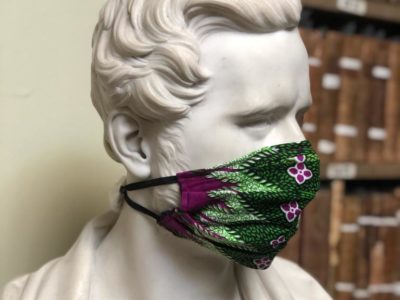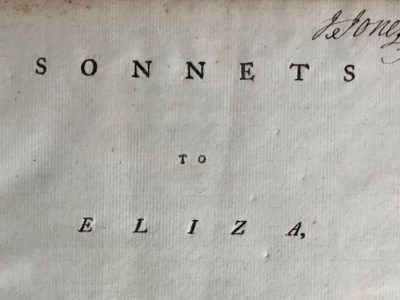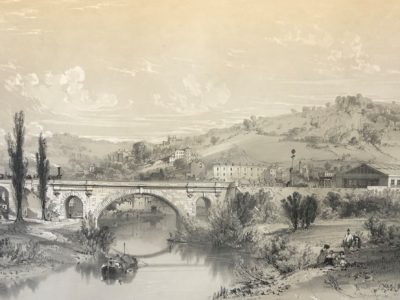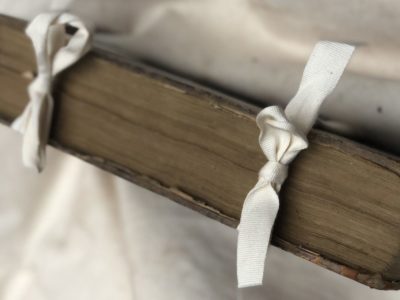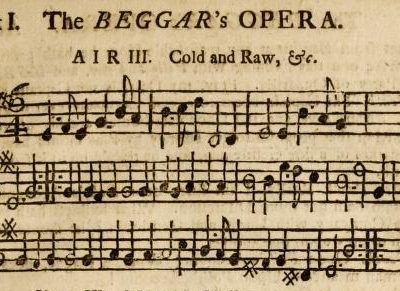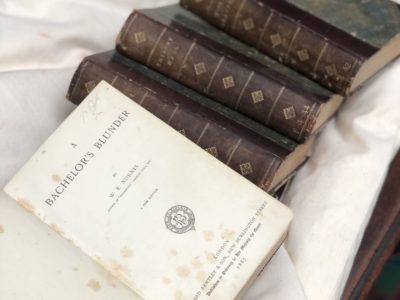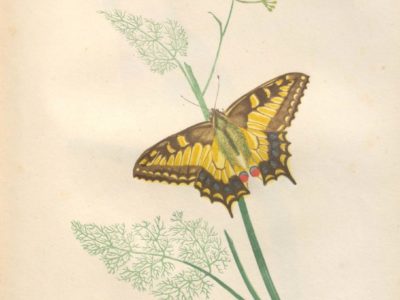Library Collections
Reopening information for members – September 2020
Our phased reopening plans for the Institution - September 2020
John Newte (1755-1792) – a Devonian sonneteer
Sonnets to Eliza was published in London by John Murray in 1790. The anonymous work, written ‘by her friend’, is extremely rare. The English Short-Title Catalogue lists only one copy (T207964), held at the National Library of Wales. No contemporary sources offer a clue to its author – but an inscription on the copy at the Devon and Exeter Institution suggests it was written here in Devon.
Lithographs of the Great Western Railway by John Cooke Bourne (1814-1896)
From his home in London, John Cooke Bourne (1814-1896) witnessed the construction of the London and Birmingham Railway, the first main-line railway to enter London. The London and Birmingham Railway Company was founded in 1833 and work soon began on a London terminus. Engineers George and Robert Stephenson chose a site on the edge of the city; a station with two platforms and two hotels was designed by Philip Hardwick (1792–1870) with a huge 70-foot Doric portico marking the gateway to the north. London Euston station officially opened on 20 July 1837. The following year a temporary terminus opened on Bishop’s Bridge Road in Paddington heralding the expansion of the railways to the west.
Discover brand new ways to support our conservation programme and become part of the history of the Institution
The Institution is a very special place in the heart of Exeter and we need your support now more than ever to ensure that it continues to thrive for generations to come. Watch the video to find out how you can get involved and become part of the fascinating history of the Devon and Exeter Institution.
John Gay’s The Beggar’s Opera
Originally from Barnstaple in Devon, John Gay (1685-1732) became one of London’s most renowned dramatists. His satirical ballad opera, The Beggar’s Opera, opened at Lincoln’s Inn Fields Theatre on 29 January 1728 and ran for 62 nights. Gay’s assault on the topsy-turvy morals, double-standards and self-interests of 18th century politics and aristocratic society remains one of the few 18th century plays still performed today.
Joseph de Mendoza y Ríos (1761–1816) and the ‘Longitude Problem’
Successful sea navigation relies on being able to determine latitude (how far north or south you are) and longitude (how far east or west). When the Greenwich Royal Observatory was founded on 22 June 1675, sailors were able to measure latitude at sea by observing the altitude of the sun at midday, but once out of sight of land they had no easy means of determining longitude.
The art of bookbinding by Joseph Zaehnsdorf (1853-1930)
This week's Book in Isolation transports you to the Outer Library of the Institution to delve into the history of the Institution's bindings.
An intricate and arduous undertaking: George Montagu (1753-1815) and his collection of shells
Beautiful, intricate and varied, shells have adorned our clothes, our homes and our objects of art for centuries. From the end of the 17th century, natural scientists began to collect, organise, observe and draw them in earnest. George Montagu’s Testacea Britannica (1803) is one of the most important works of natural history to come out of the Age of Enlightenment – and it has a special significance for Exeter.
The forgotten novels of William Edward Norris (1847-1925)
In his day, W. E. Norris was described as the ‘Gainsborough of English novelists’, an heir to Trollope and a writer of ‘Disraelian intensity’ … so why aren’t we reading his novels today?
William Savage’s Practical hints on decorative printing (1822)
From the early 19th century, Koenig & Bauer’s new steam-powered double-cylinder printing press, capable of printing over 1100 sheets an hour, disseminated information fast. The circulation of The Times newspaper increased from 5,000 to 50,000 by the middle of the century. However, not all printing was about speed – in 1822 William Savage published his guide to fine art printmaking – still a popular art form today.

